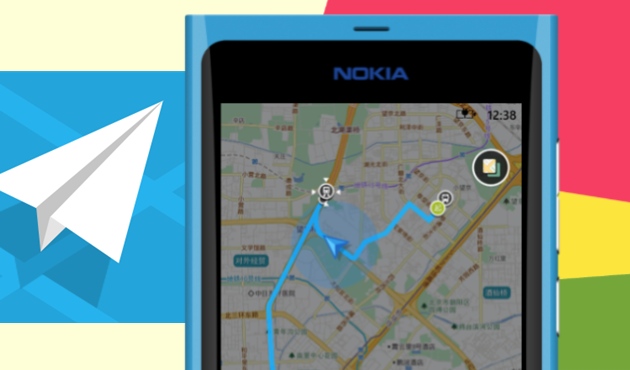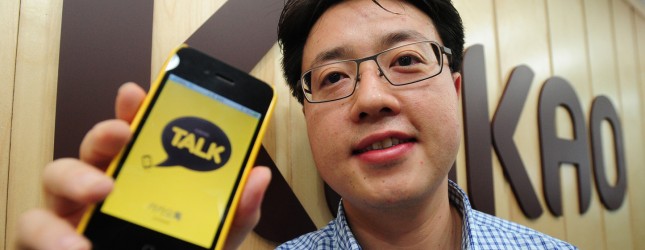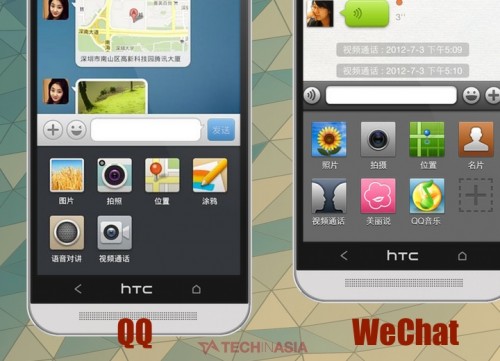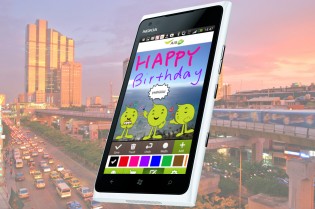We Are Social Asia Tuesday TuneUp #78
Alibaba invests $294M in China’s top online mapping company AutoNavi
Two weeks after taking an 18 percent stake in Sina Weibo, China’s biggest e-commerce company has announced another investment of $294 million in AutoNavi. This investment will take up 28 percent shares of the company. AutoNavi is China’s top online mapping company, beating search giant Baidu and even Google Maps in terms of mobile maps market share in China. As an industry leader, AutoNavi seems to be a perfect partner for Alibaba in seeking opportunities to explore and develop new location-based e-commerce services. It is also clear that this deal will give Alibaba access to a huge pool of consumer behavior data based on location. With Alibaba’s acquisition of the social music service Xiami last year and their more recent stake in Sina Weibo and AutoNavi, Alibaba has quickly become equipped with big social data and strategic alliances to explore a new kind of e-commerce service—one that will integrate three big things: social, mobile and location. It will be interesting to see what kind of revolutionized services Alibaba will bring out to the market in the future.
In Japan, politicians leverage Line to deepen ties with supporters
The importance of mobile messaging apps is growing. Many brands already know it and try to leverage the increasing impact of mobile messaging app to engage with their consumers. Politicians in Japan are no exception to this recent trend. According to Japan-based mobile messaging app Line, ten political parties in Japan have opened official accounts on the app. This was after the ban on the use of internet-based mediums for election campaigns (including social networks and blogs) was lifted. Line provides politicians an opportunity to engage with their supporters more directly and actively, by allowing users to opt-in to receive message from political parties, as well as leave feedback and comments on their accounts. Will this impact on the way politicians in Japan communicate with public?
IGAWorks joins KakaoTalk to increase game releases and app traffic
Korea-based mobile messaging app Kakaotalk has announced a partnership with IGAWorks, the local in-Game advertisement provider. The partnership will involve integrating IGAWorks’ adPOPcorn into Kakaotalk that will provide “in-game and in-app incentivized offers, as well as pop-up adverts that link through to social and mobile media channels.” This collaboration is intended to strengthen Kakaotalk’s video game offerings—features that have contributed to distinguishing Kakaotalk from other mobile chat apps. By allowing all game developers on Kakaotalk to access adPOPcorn, Kakaotalk is looking to create a new channel of income for video game developers and publishers. The goal is to encourage more game releases which will drive more user traffic to the app. This also reflects KakaoTalk’s desire to attract more brands as well, to tap into Kakaotalk as a mobile advertising platform.
QQ gets makeover to look like WeChat; new look upsets users
Tencent’s drastic revamp on QQ has led the chat service to resemble China’s most popular mobile chat app, WeChat. This makeover has brought out a large number of angry users. According to Techinasia, nearly 95% of people who left reviews on the newly updated QQ app have given it the lowest star rating. By contrast, the previous version of the app mostly received five-star feedback. The new look of QQ app, ungracefully called “second hand WeChat” by disgruntled users, has taken on less of a traditional IM user interface, and this is the root of most of the discontent. An indicator light that used to appear beside user contacts’ names allowing users to indicate the online or offline status of users has been taken out of the app, despite the fact that most of users found the function to be useful. In addition, the new style of chat window inspired by WeChat seems a waste of space for those who prefer QQ app as a “fast-paced conversation in one window.” Users have already expressed their stance against the new look of QQ, requiring Tencent to bring previous IM-like features back. We will wait to see how Tencent will react.
Japan’s Quan-inc partner with AIS to roll out sticker maker app “AIS myStickerShop”
Japan based mobile application maker Quan-inc has partnered with AIS, Thailand’s top mobile network operator. Quan-inc is well known for developing Lounge – a mobile messaging app with unique features of collaborative drawing and message decoration. The partnership is intended to release an app called “AIS myStickerShop”. The app allows users to create their own stickers for their mobile messaging apps. Currently, only Android users can enjoy the service. iOS users will have to wait a while for an iOS version to come out later this month. Quan Inc’s partnership with AIS could be indicative of a desire to expand their presence in Southeast Asia, as the deal with AIS may open up an opportunity to launch future apps for Singtel, Singapore’s top mobile network operator and a stakeholder in AIS.
Research by Socialbakers has revealed that 50% of the reach of a Facebook page’s posts occurs in the first half hour, and 80% in the first 3 hours. The below chart, based on a sample of 1,000 posts, displays the real-time minute-by-minute increase in reach.

Time spent on Google+ far behind Facebook
Google+ users spent an average of 6 minutes 47 seconds on the network during March, a far cry from the 6 hour 44 minute average on rival platform Facebook. Whilst this does represent growth from the 3.3 minutes spent in February 2012, in contrast to Facebook’s dip from 7 hours 9 minutes in March 2012, the rate at which G+ is catching up can be, by these figures at least, dismissed as negligible. Figures reported by Nielsen also revealed 20 million unique US users of the G+ Android and iPhone apps, a 238% increase from March 2012 and 28 million desktop users, up 63% in the same period. However, there is likely to be some crossover between the two groups. In fact, accusations have come in that Google+ is essentially a ‘desolate wasteland’, based on the activity of the top 100 global brands. According to research by Millward Brown, 40% of these posted to Google+ either infrequently or not at all, with 17 (including Nike and Pepsi) not having posted anything for over a week. McDonald’s, as shown below, have never had a single post.

How many Vines are shared
Research has been produced into how many branded Vines are shared to celebrate the app turning 100 days old. They discovered that branded Vines are shared 4x as often as branded online videos and, of the top 100 most shared, 4% of Vines were branded, compared to 1% of online videos. In total, 5 Vines are shared per second; more of these come during the weekend than the rest of the week combined. Time-wise, Vine frequency peaks from 10am-11am Eastern Time.
75% of top US retailers and restaurants are on Foursquare
Three quarters of the US top 100 retailers and top 100 restaurants are now on Foursquare, of which a full list can be found here. As for smaller businesses, over 1 million businesses have been claimed, but this includes some chain stores; only 17% have ever tried a promotion with the network. Larger businesses are seeing a positive effect from their campaigns; Bloomin’ Brands had 678 users redeem an offer for Outback stores in Richmond, VA, which gave a free appetiser for every second check in. Karen Soots, VP of media services at Bloomin’ Brands, praised the campaign’s effect, saying that if they were to do that nationwide at many restaurants over three weeks, it’s “millions of dollars in incremental revenue”.

Littlewoods collection to be sold in Facebook Newsfeed
Fashion retailer Littlewoods will be selling their latest collection within the Facebook Newsfeed. Using a system called SeeitShopit, which allows full collections to appear within a single post, it will enable fans to browse, share and purchase items from Myleene Klass’s new swimwear collection. They have since posted further ‘SeeitShopits’ about their summer collection, as shown below:

Target launch deals with Facebook
Retailer Target has produced a set of offers, which will automatically generate Facebook posts when claimed, unless the user turns this feature off. Starting with around 700 discount offers and expected to grow to 1,000, the campaign is set to be hosted on a Target website called ‘Cartwheel’. Users can claim a deal at any point, producing a unique barcode that tracks every offer they claim. This barcode is then scanned at checkout. Cartwheel works seamlessly with mobile, meaning that a discount can be claimed at any point in the process, even as you’re walking towards the checkout.
AA’s first class lounge open to those with high Klout scores
American Airlines have decided to open their ‘Admirals Club’ lounges free of charge to those with high Klout scores, regardless of whether they’re due to fly with AA. Anyone with a score of over 55 will qualify for a free one-day pass in any one of 40 airports and can take advantage of the benefits including free WiFi and beer. The campaign hopes that these people will then tweet or post to Facebook expressing their gratitude, though this is not a requirement of claiming the offer.
Huggies ‘TweetPee’
This week, in weird app news… introducing ‘TweetPee’, a nappy sensor plus Twitter alert that tells parents when their baby needs changing. The campaign from Brazil also allows parents to keep track of the number of Huggies they’ve used and even order online when they’re running low. The campaign is certainly a fun and innovative one – we wonder how many parents will be hooking their children’s nappies up to Twitter.
Coke zero’s #motherpiece campaign for forgetful children
Yesterday marked Mother’s Day in many countries across the world, the day of the year that celebrates children forgetting to get their mums anything. Coke Zero to the rescue! They targeted absent-minded children (particularly boys, for some reason) and asked them to tweet their best excuses with the hashtag #motherpieces, pushing the campaign through a set of promoted tweets. The best entries were then selected to send in a personal photo, with 10 classically-trained painters on hand to create a ‘motherpiece’ of the winner. If they sent in their home address, they’d also receive a framed copy. Mother’s Day salvaged.





